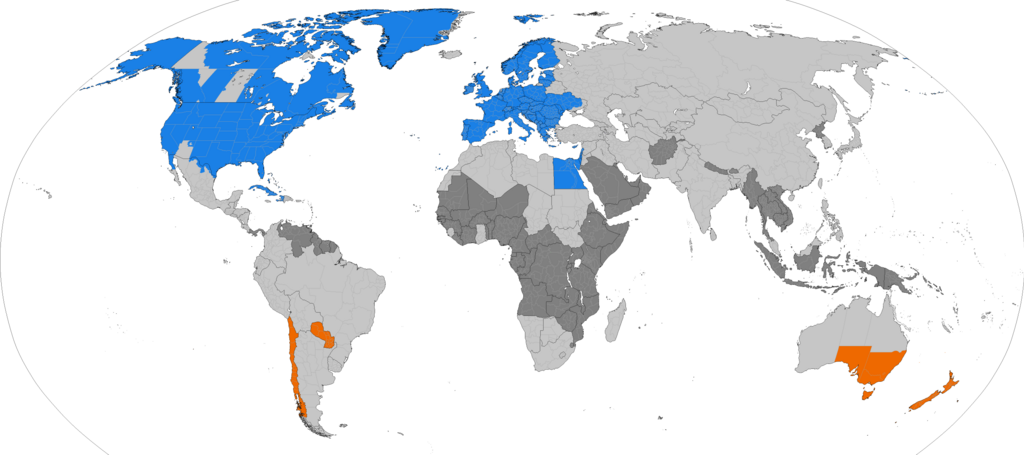If my timing were better I would have discussed this a few days ago. However, this doesn’t become very visible until the last moment. Then I forget about it and go on with my life. Invariably, twice a year, right before the change to/from Daylight Saving Time, my web traffic logs start to hum with stacks of referrals from search engines that look like this:
- does arizona recognize daylight saving time
- why doesn’t arizona recognize DST
- time zone Arizona
- arizona time in the summer
- is all of arizona in the same time zone
I’ve noticed at least thirty permutations of this same basic theme in the last week. They all logically channel to my “time zone anomalies” page where I focus on the truly strange way DST relates to and interacts with the Navajo and Hopi native American nations. The page stays quiet much of the year but it’s soaring with hits right now. Its Google Analytics chart shows a huge upward spike these last few days.
DST Specifically

Most of Arizona does not recognize Daylight Saving Time. Neither does Hawaii by the way. Indiana used to be part of this select group too but switched in 2006. This whole set of topics figures prominently in Wikipedia’s Daylight Saving Time and the History of Time in the United States. So please consult those pages if you feel a need for the full set of details.
Its benefits, while highly touted, are decidedly mixed and even somewhat controversial. One recent study receiving a lot of press attention goes so far as to suggest that Indiana’s switch to DST may have wasted more energy than it saved. This would contradict the entire impetus behind the expansion of DST to cover an additional four weeks in the Energy Policy Act of 2005.
The Why
In my Arizona Time page I answered the “what” but I didn’t answer the “why.” If the keyword searches are any indication there seems to be a desire to know more. I dug a little deeper. The best explanation I can find appeared on the Daylight Saving Time page from the Arizona State Library, Archives and Public Records organization. Interestingly, Arizona has actually recognized DST periodically throughout its history, but not since 1967 and generally only during wartime.
A couple of different reasons emerged from the state’s geography. First, it’s located in an arid desert climate that is blazing hot during summer months. Sundown brings relief so there’s no incentive to push nightfall further into the evening. People want the cooler air during waking hours when they can enjoy it. Second it’s located at the far western fringes of the Mountain Time Zone. Keeping a common time with California and Mexico during the summer benefits the state from a business standpoint.

If anything, Arizona seems to be more in synch with much of the rest of the world which appears to be de-emphasizing Daylight Saving Time. Many countries have never recognized DST and many others have discontinuing it. Plus, they never have to change their clocks.
Is It Possible To Run Afoul Of This Anomaly?
In the summer of 1992 a group of friends took a trip across the United States to visit the crown jewels of the National Park system. They arrived at the northern rim of the Grand Canyon to relax awhile, and they camped, hiked and toured.
On the second day they stopped at the Grand Canyon Lodge saloon to swap stories and wind down with a couple of drinks after a long day climbing over difficult terrain. Closing time approached and they found themselves wishing for one more beer. Last call didn’t happen as expected. The saloon remained open and people kept ordering drinks. The guys were perplexed. They learned eventually that they’d forgotten that Arizona does not recognize Daylight Saving Time. The guys had been using the wrong time for two days.
I was one of those guys. While this is a little embarrassing to admit, I have to add that we were elated and grateful to “find” that hour. How often does one wish for more time and actually get it?

Leave a Reply